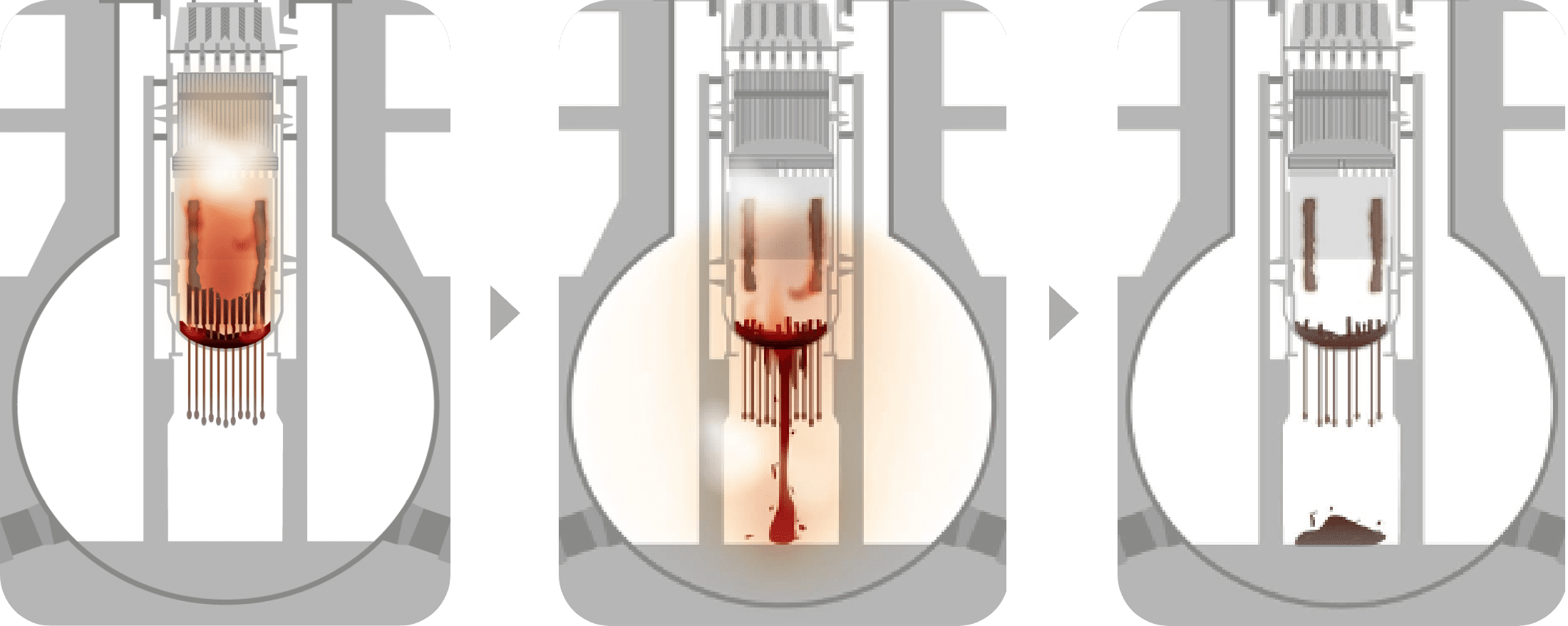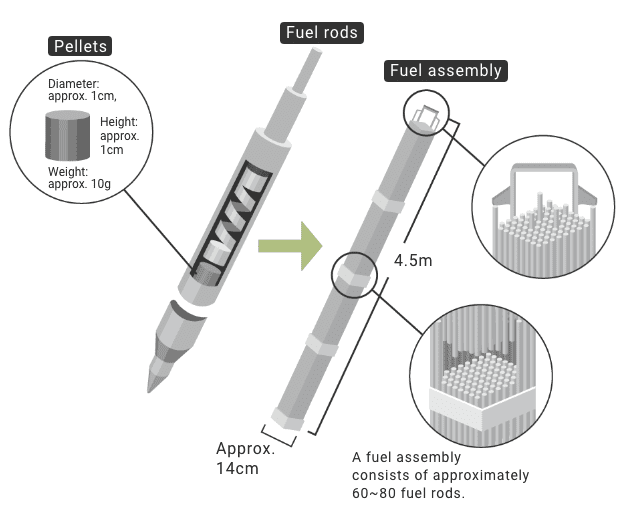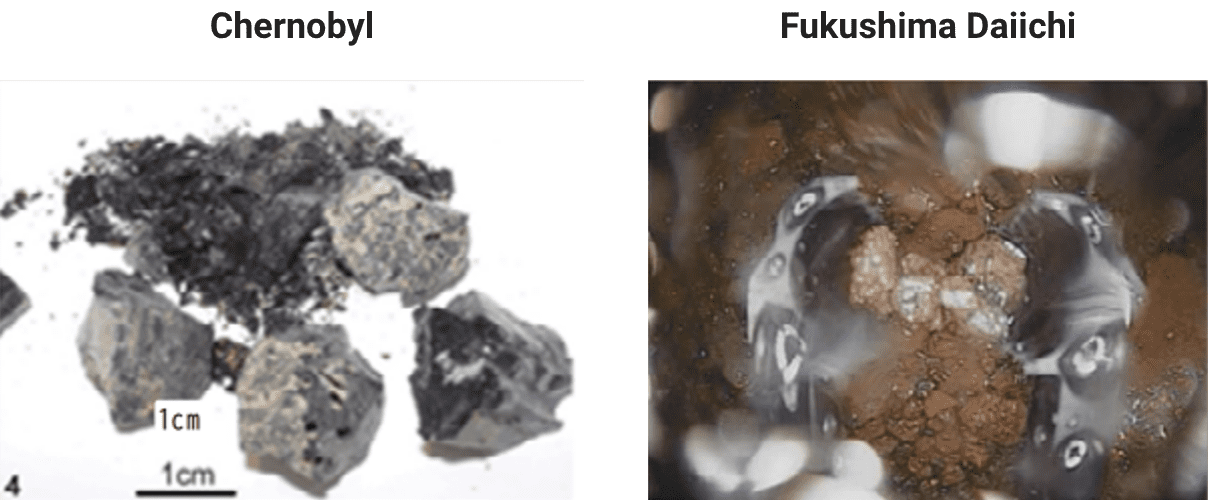What is fuel debris?
What is fuel debris?
When the accident occurred, Units 1~3 were in operation, so there was fuel in the reactor cores.
After the accident occurred, it became impossible to cool the reactor cores due to a loss of emergency power thereby allowing the fuel to overheat and melt along with fuel rods and in-vessel structures. These melted structures then cooled and solidified to become what we call fuel debris.
It is estimated that there is a total of 880 tons of fuel debris in Units 1~3.

Cooling water continues to be injected into Units 1~3 to cool the fuel debris to this day.
The heat given off by the fuel debris has greatly decreased since the accident and is now being kept in a stable state.
Temperatures inside the primary containment vessels are being maintained at approximately 20~35℃.
We are currently implementing various investigations to examine conditions of the primary containment vessels and the preparations to retrieve fuel debris.
The difference between fuel debris and spent fuel
Uranium fuel is contained in the metal cladding tubes (fuel rods), so spent fuel remains in its originally designed state.
Fuel debris is overheated fuel that has melted with fuel rods and in-vessel structures, then cooled and re-solidified. Therefore, fuel debris has characteristics that ① the uranium fuel is not contained in fuel rods, and ② the fuel debris is in various shapes, such as lumps, pebbles and dust.
External appearance of spent fuel vs. fuel debris
Spent fuel

Fuel debris

Therefore, the fuel debris will be put into a metal container used to contain uranium fuel and stored.
(The same technology that is used to store spent fuel will be used to store the fuel debris since they both entail the storage of uranium fuel)







